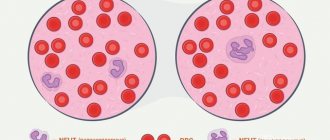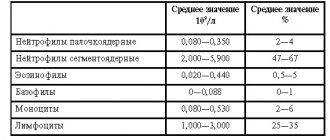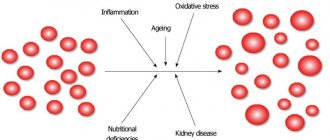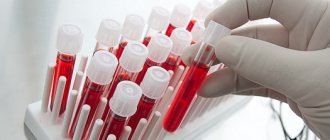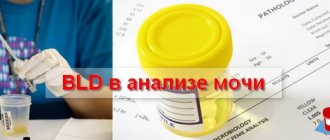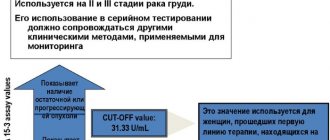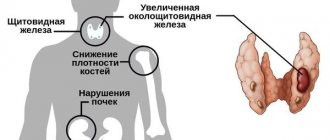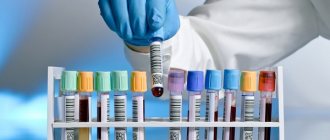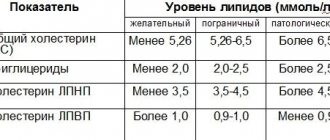A clinical or general blood test is one of the simplest, most inexpensive and at the same time informative laboratory diagnostics that allow the doctor to get an initial idea of the patient’s health status.
It is prescribed in the vast majority of cases, both as part of the initial examination and to assess the quality of the therapy. In addition, not a single preventive medical examination is complete without this method. PDW in a blood test, as well as all other indicators, is of great interest to the doctor conducting an examination and assessing the general physical status of the subject.
Pathological changes in this parameter often indicate the presence of a fairly large number of different pathologies, which, in the absence of proper therapy, can lead to dire consequences.
What is PDW and its importance for the body
PDW in blood testing is a designation for the distribution of blood cells in the bloodstream. Such a blood test is necessary to determine the presence of certain pathogenic processes in humans. Platelets are heterogeneous in nature; both small and large cells are found. There is a somewhat similar meaning - RDW, but it refers to the volume of red blood cells in the bloodstream.
Platelets are an important part of human blood. When a blood vessel is damaged, they accumulate at the site of injury and thereby stop the bleeding.
If there are few of them, the person is in danger of losing a large amount of blood. If, on the contrary, there are more platelets, this can cause the formation of blood clots, which, if they come off, can block the vessel. This is dangerous, since completely blocking the blood flow causes tissue death and, in some cases, death.
Therefore, the PDW indicator is very important - it determines whether the level of platelets in the blood is high or low. If the results are significantly abnormal, together with other tests that are not good enough, this may indicate the presence of serious diseases.
Established norm
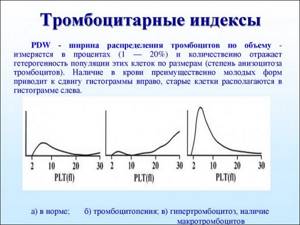
Platelets are the smallest blood cells. As a result of gluing to each other, they form a clot, which is necessary when the integrity of the capillaries, veins or arteries is damaged. These substances help stop bleeding by sealing the injured vessel wall.
An important indicator for determining nuclear-free blood plates is the PDW index, which stands for the width of platelet distribution by volume. This indicator demonstrates the diversity of substances in size and shows how much these elements have changed in size. In other words, the platelets come in different sizes, and the PDW test will help determine how many micro and macro platelets are present.
In addition, thanks to the PDW indicator, the doctor can learn about the probable pathology. Suspicion will arise when the established value is violated.
If a person is healthy, his distribution width will be 15-17%. But at the same time, a slight shift (by 2-3%) is quite acceptable.
They can be called:
- non-compliance with the rules for donating blood;
- physical and moral condition of the subject;
- chronic pathologies.
For the age category up to 18 years, the norm is set at 10-16%. Allowable offset is 1%.
The test produces distorted data if:
- low immunity;
- congenital diseases.
Treatment will most likely be needed when the width of the platelet distribution is much higher than normal, that is, if there is an increase in the coefficient by more than 19-20%.
How and under what conditions is it formed?
PDW stands for platelet distribution across blood volume. These are the smallest blood cells, their size is no more than 3-5 microns. The cells themselves are flat and oval in shape, they are transparent and nuclear-free.
Platelets have their own purpose:
- produce reactions in which a blood clot is formed that can stop bleeding in areas of tissue damage (internal and external);
- promote the growth and restoration of blood vessels, provide nutrition with bioactive substances;
- eliminate the inflammatory process along with the delivered immune complexes;
- purification of blood (filtration) from antigens.
Platelets are formed in the bone marrow. Most of them are located in the blood vessels, the smaller part is in the spleen. In this organ (as well as in the liver) the disposal of dead, colorless bodies occurs. The life of platelets is 8-11 days. In this case, the synthesis of new cells occurs without interruption. Both young and old can be present in the blood at the same time.
In total, red cells have several stages of life:
- youth;
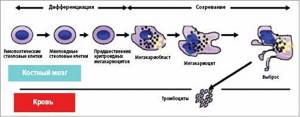
- maturity;
- old age;
- irritability;
- degeneracy.
Its size also depends on what stage the platelet is at – the older it is, the smaller it is. Cell volume heterogeneity is also determined by PDW (heterogeneity). If the remaining cells circulate in the blood in their normal volume, minor deviations from the norm do not mean pathology. PDW analysis is performed immediately with MPV, the average red cell volume.
pdw increased
Found (47 posts)
hematologist April 19, 2021 / Elvira
Good afternoon Dmitry Aleksandrovich, I doubt my diagnosis of primary myelofibrosis... can they make a mistake during the trepanobiopsy analysis? I am 33 years old, passed... open (7 more messages)Last 5:
May 7, 2021 / Elvira
... BUT hemoglobin 10.0 (11.0/17.5), leukocytes - 4.3 (4.5 / 10.5), RDW - 14.2 (11.6 / 13.7) - increased
, PCT-0.459 (0.106 / 0.399).
PDW
- 13.7 (15/0 / 17/0). What can you as a specialist say? It's normal from the beginning...
03-Ambulance January 27, 2021 / Olga
Hello. If the ESR level in the blood is elevated
up to 30, what does this mean? And what additional examinations need to be completed?
Answers... ,0 MCHC 326 RDW-CV 12.8 RDW-SD 41.1 PLT 210 MPV 9.3 PDW
16.5 PCT 0.195 ESR 25,(varies in analyzes 30...25)
here... open
AIDS December 21, 2015 / Evgeniy / Tynda
... but according to my general blood test, my blood count is elevated
Hemoglobin (HGB) 173.00, and also increased: Platelet distribution width by volume (
PDW
) 59.20, otherwise there is an increase... not like these two, especially
PDW
increased . I am 22 years old,. And actually mine... open
hematologist July 13, 2015 / OLGA / SAINT PETERSBURG
Hello, I'm elevated
ferritin 196.6 >ng/ml (10.0 - 147.0) WBC Leukocytes 11.5 > 109/l (4.0 - 10.0) ... platelets 6.9 fL (6.0 - 11.0) PCT Thrombocrit 0.308 (0.150 - 0.500) PDW
Distribution
width of platelets by volume 12.5% 11.0 — 18.0) ... open
03-Ambulance July 7, 2015 / Olga / Moscow
… -139 (elevated
), the average concentration of Hb in erythrocytes (MCHC) is 35.5 (
increased
), the relative width of platelet distribution by volume (
PDW
) is 14.2 (
increased
), platelets are 158 (decreased). Please comment on the blood test. There were … open
hematologist March 8, 2015 / Tanya / Chelyabinsk
Hello. I have a higher
MID is not mature. Is it cancer? I’m very scared. I feel bad.
Leukocytes-8.3 ... Red blood cells-4.51 Hemoglobin-122 HCT-39.4% MCV-87.4 MCH-28.4 MCHC325 PDW
-12% Platelets-248 (and previously there were 380,402,412) MPV-9.8
eoz-2 … open
therapist December 22, 2014 / Alexey / Chusovoy
Good evening. I'm interested in a question, I have a high
Platelet distribution index (
PDW
) 75.1% with the norm being 8-65. What could this mean? Thanks in advance to open
December 22, 2014 / Alexey
Good evening. I'm interested in a question, I have a high
Platelet distribution index (
PDW
) 75.1% with the norm being 8-65. All other indicators are normal. What could this mean? Thanks in advance
hematologist November 19, 2014 / Konstantin... / Ekaterinburg
... Height 180 cm, weight 67 kg. Promoted for six years
hemoglobin (165-168) and red blood cells are at the upper norm.
According to symptoms - ... MCV 71.2 MCH 29.0 MCHC 407 RDW 10.4% MPV 6.5 PDW
17.9 LY 26.7 MO 9.7 GR 63.6 ESR 3 Blood test ... open
hematologist October 4, 2014 / Galina / Yaroslavl
..., nasopharyngitis, moderate severity + Aphthous stomatitis. Because the last blood test was elevated
ESR, re-dated blood on September 22.
red blood cells 4.78, hemoglobin 130, ... 5.1 HGB 136 HCT 39.8 MCV 77.4 RDW 12.7 MPV 10.2 PDW
10.9 PCT 0.6 RDW-SD 34.7 P-LCR 25.2 MCH 26.2 … open
PDW norm table
PDW - in a blood test - is a value that has both its deviation and its norm.
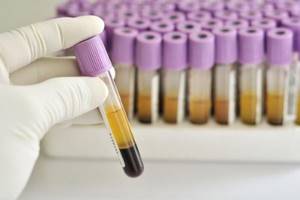
| Patient | PDW standard | Peculiarities |
| Men | 15-17% | |
| Women | 15-17% | During menstruation, blood is not tested. PDW decreases during this period (it varies for each woman). During pregnancy, the values also change - from the norm to 10-20%. |
| Children | 10-14% | During growth and restructuring of the body, values may change, but only slightly. |
The predominance of old and new platelets should not be higher than 10%, otherwise the risk of blood clot formation increases. While a decrease in level can cause large blood losses.
Other cases of abnormal PDW blood levels
Reasons why PDW levels in the blood may change
Elevated PDW levels do not always mean some terrible disease such as cancer, severe anemia, or internal bleeding. Sometimes the reasons are ridiculously trivial, especially if PDW is the only indicator that has a serious deviation from the norm in the overall analysis. And this is a violation of the rules for taking tests.
Before you blame the laboratory workers and the nurse who took the test, carefully remember what you did or did not do before donating blood. Although no special preparation is required, there are a number of restrictions that the doctor must warn you about in advance. It is not recommended to neglect them:
Physical exercise. After active physical activity, the heart rate increases, and the number of various blood cells increases rapidly. Therefore, the analysis may be unreliable
It doesn’t matter how long a person has been playing sports, he should be at rest for about 30-40 minutes before taking the test. It is advisable to limit the load the day before the analysis.
Welcome, write. You should not eat food earlier than 8 hours before the test. The blood may clot, examination will become impossible, and all formed elements will dissolve. The day before the test, it is not recommended to eat fatty and spicy foods so that the liver function does not worsen and cholesterol is not even higher than usual. Menstruation. During menstruation, a woman's pure platelet count decreases. To avoid getting a false test, it is recommended to avoid donating blood during this period of the cycle. Pregnancy. During pregnancy, hormonal changes occur in the body, which cannot but affect the blood test. Blood clotting increases, cholesterol levels also increase. The hormone test will also be different. The doctor takes this into account when looking at the results. Taking medications Many medications affect test results. Therefore, on the day of donating blood, do not take any medications; it is recommended to even stop taking vitamins. Consult your doctor; some medications may not be taken a day or two before the test.
- Myelodysplastic syndrome. The abbreviation MDS refers to a range of diseases affecting the bone marrow. As you know, it is in it that blood cells are formed. Therefore, MDS cannot but affect the blood test. This is the only way to detect the disease. The reasons are usually unknown. MDS can occur after chemotherapy or chemical poisoning.
- Leukemia. This disease is also called blood cancer. Cancer cells attack the bone marrow and the normal formation of blood cells becomes impossible. As a result, the patient experiences a decrease in the number of almost all blood cells, and the immune system suffers.
- Metastases to the bone marrow. Any cancer at a certain stage metastasizes. They can affect the brain and spinal cord, as well as other organs. In this case, except for PDW, almost all blood parameters will be reduced.
- Thrombocytopenia. This is an insufficient number of platelets in the blood. This condition itself can be caused by a variety of reasons: bleeding, cancer, etc. It manifests itself in increased bleeding of the gums, hemorrhages, and anemia.
- Radiation sickness. Radiation sickness is a condition of the body that occurs as a result of radioactive radiation of a certain range. The most striking symptoms are low blood pressure, hand tremors, decreased muscle tone, and diarrhea.
- Chronic hepatitis. Despite the scary name, chronic hepatitis is usually mild and does not cause serious liver damage. Blood test results may be abnormal. This is primarily manifested in increased bilirubin.
A timely blood test will be one of the finishing touches in the overall picture necessary to make a correct diagnosis.
- Privacy Policy
- Terms of use
- Copyright holders
- Adenoma
- Uncategorized
- Gynecology
- Thrush
- About blood
- Psoriasis
- Cellulite
- Ovaries
Symptoms of high and low PDW
Symptoms of an increase or decrease in PDW in the blood depend on the disease as a result of which the indicator deviated from the norm. This can occur for various reasons; there are quite a few diseases that can cause PDW to decrease or increase.
For example, an increase in the indicator may indicate that a person has anemia. In this case, this will be expressed by pale skin, low blood pressure, weakness, and an enlarged spleen.
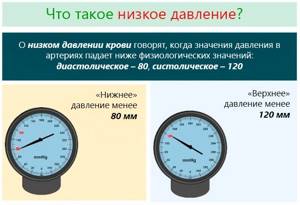
If PDW in a blood test is low, then the person often suffers from low blood pressure
A decrease can also mean various reasons, including a lack of vitamin B12 and folic acid. A deficiency of these elements is expressed in problems of the nervous system, severe hair loss, and a tendency to depression.
Decrease in values
If the CBC indicates a decrease in the described parameter, then at the same time this is a sign of a low platelet count. A low platelet index is not always considered as a harbinger or symptom of various pathologies.
It is necessary to take into account that in women during menstruation, PDW is sometimes reduced. In addition, a decrease in the indicator can occur due to an unhealthy lifestyle, poor-quality or unbalanced nutrition, as well as the individual physical characteristics of the body
Low index values are observed in situations such as:
- diseases of the hematopoietic organs;
- oncological diseases;
- radioactive exposure;
- functional liver disorders;
- viral and bacterial infections;
- taking cytostatic drugs;
- DIC and myelodysplastic syndrome;
- anemia due to deficiency of vitamin B12 or folic acid.

Myelodysplastic syndrome is one of the reasons for a decrease in PDW - these are diseases that damage the bone marrow, which leads to less production of all formed blood components, including platelets. A decrease in the indicator is also observed with the formation of metastatic foci in the bone marrow.
Chronic hepatitis often causes a decrease in this coefficient, which means that the doctor, suspecting such a liver disease, must prescribe the patient to undergo a biochemical blood test. This will determine the concentration of bilirubin, and in case of hepatitis it will be high.
Reasons for promotion and demotion
PDW in a blood test is, figuratively speaking, a means of determining the presence of dangerous diseases. Of course, you cannot rely only on the values of this indicator, however, if the figure deviates greatly from the norm, you should think about other analyzes and a complete check in general.
The reasons for increasing PDW are the following:
- oncological diseases (they quite significantly change the composition of the blood as a whole);
- other inflammations;
- anemia;
- bleeding that occurred after surgery.
An increase in performance does not always mean that there are serious problems. Sometimes the reason may be a simple failure to follow the recommendations before taking the tests. Also, the value may deviate from normal due to taking medications that somehow affect the composition of the blood.
Reduced PDW means few cells in the bloodstream.
Discrepancies from the norm may be caused by the following reasons:
- lack of vitamin B12 and vitamin B9;
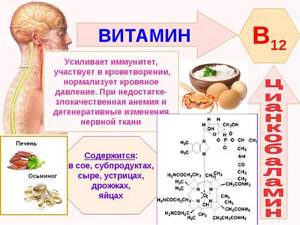
- dysfunction of the liver and hematopoietic organs;
- oncology;
- various viruses and infectious diseases;
- taking medications such as cytostatics and others.
Women are not recommended to take tests during menstruation, since all readings will, in principle, differ from the norm, and the platelet volume will be reduced.
However, if the cause of low PDW is not determined, deviations from normal values should not be neglected. Reduced volume can have a detrimental effect on organs, affecting their integrity.
Changes in PDW can occur as a result of poor nutrition, bad habits, or physiological characteristics of a particular organism.
Reasons for falsely high results
Among them:
- Wrong analysis.
- Violations of sample processing techniques.
Sometimes the patient himself may be to blame. Many factors influence the final result.
Deviation occurs in the following cases:
- Intense physical activity. Approximately a day before taking the test, you should not practice excessive mechanical activity.
- Smoking. It is abandoned a few days before the study.
- Eating. Food should be avoided 3-4 hours before blood sampling. This way the results will be more accurate.
- It is not advisable to take the test during menstruation, pregnancy and breastfeeding. Because the results will definitely be false. Possibly within the margin of error.
- You should also not drink alcohol, overheat or become hypothermic. In about 1-2 days. Deviations within small values are possible. If other analysis indicators are normal, such errors are not paid attention to.
When the platelet distribution index is increased, this means that the number of young cells is greater than the number of old, waste structures. As a rule, blood diseases are to blame.
It often turns out that there is no pathological process and the deviation is due to the actions of the patient. Smoking, leading an unhealthy lifestyle.
Indications for the study
A referral to donate blood for analysis is issued by a physician. After the examination, he makes a conclusion whether the person should worry about his health or not. Tests and subsequent examinations will either confirm fears or refute them.
The patient is sent to the laboratory, where blood is drawn and the resulting material is examined. This takes time. Then all indicators, including PDW, are written out. With the laboratory tests obtained, the person returns to the therapist, and he examines the results obtained.
The results issued by the laboratory may look like a table in which the data is written down (normal and presence in the patient). It may also specifically indicate whether the person has a disability.
What is pdw in blood test
I took a general blood test and I have never had such an ESR before - 2 mm/h. This is fine? All other indicators except PDW (slightly elevated) are normal. I read that in newborns it is from 0-2 mm/h. Why does low ESR happen?
Girls, the situation is this: my daughter had a temperature of 38-38.5 for 2 days. Shot down to 37.5. I called a doctor. Virus. And for 3 days now the thermometer has been showing around 37 (36.9-37.3). Today they called a doctor to the house again and took the OAC test. The doctor didn’t find anything, she said that in 2-3 days everything should return to normal, and a blood test showed the following:
On the 14th I took tests for blood clotting and a complete blood count. In general, they completely confused me. General blood test: Hemoglobin - 112 (normal 120-140) Leukocytes - 10.13 (normal Adults: 4.0-9.0) Hematocrit (HCT) - 33.7% (normal Adults: 35-54) Platelet distribution width by volume (PDW) - 9.6 % (10.0 - 20.0) Coagulogram: Prothrombin time (PT, RT, sec.) - 10.3 sec (10.4 - 12.6) Fibrinogen - 3.56 g/l (1.8 - 3.5) Now it’s a mess in my head. That's where leukocytes come from. No colds, no thrush either.
We did a routine clinical blood test, these are the results WBC 9.2 RBC 4.37 HGB 12.3 g/dl (112) HCT 36.6% PLT 387 H PCT .348 MCV 84 MCH 28.2 L pg MCHC 33.6 g/dl RDW 10.7% MPV 9.0 PDW 16.8% % LYM 86 H% #LYM 7.6 H %GRA 13.1 L % #GRA 1.3 L %MON 3.8 % #MON 0.3 L Neutrophils Band 1 Segmented 10 Eosinophils 1 Monocytes 2 ESR 2 The child is 6 months old, confused by low segmented neutrophils and increased lymphocytes. From us Our pediatrician shrugs it off, everything is normal for her, but the norms on the Internet say something else.
Hello! Help us determine why our blood counts responsible for immunity are falling. My daughter is 2.10 years old. I’ll start my story when the blood counts were good. In May, a nursery examination was held and the blood counts were as follows. Blood test dated May 17, 2013. Leukocytes (WBC) 6.4 x10^9 l Segmented neutrophils (NE%) 34% Band neutrophils 1% Lymphocytes (LYM% ) 53%Monocytes (MON%) 10%Eosinophils (EO%) 2%ROE 6Red blood cells (RBC) 4.70X10^12Hemoglobin (HGB) 127 g/lAfter the illnesses we suffered06/07/2013-06/13/2013. obstructive bronchitis associated with flowering. 08/21/2013 o. tonsillitis Blood test dated 08/23/2013. Red blood cells (RBC) 4.62X10^6mm Hemoglobin (HGB) 13.7.
Interpretation of general blood test indicators. When using automatic hematology analyzers, the general blood test indicators are written in an abbreviated version in English. Below is a breakdown of the indicators included in the general blood test. WBC (white blood cells - white blood cells) - leukocytes in absolute numbers RBC (red blood cells - red blood cells) - erythrocytes in absolute numbers HGB (Hb, hemoglobin) - hemoglobin, concentration in whole blood HCT (hematocrit) - hematocrit PLT (platelets - blood platelets) - platelets in absolute MCV numbers.
I keep it for myself so as not to lose it. Source here: https://articles.komarovskiy.net/klinicheskij-analiz-krovi.html
The rule of donating blood only in the morning and only when hungry does not apply specifically to a clinical blood test. For a number of other studies, it (this rule) is mandatory.
The functions of the shaped elements are different and varied. Leukocytes provide immune protection, platelets provide blood clotting, and red blood cells transport oxygen and carbon dioxide.
from Komarovsky's website
Clinical blood test The concept of “blood test” is extremely broad. There are several hundred (.) parameters that can be analyzed, therefore, when writing a referral for a blood test, the doctor always notes what specific information he would like to receive. This could be a search for microbes, assessing the state of immunity, determining the level of hormones and enzymes, studying physical and chemical properties, and much, much more...

How is PDW determined?
PDW in a blood test is a value that can change not only as a result of the occurrence of pathologies in a person, but also due to insufficient preparation for the analysis. The volume and distribution of platelets is determined by donating blood from a finger prick. To obtain a more detailed analysis, a sample is taken from a vein.

In order for the result to be accurate, the patient must prepare in advance:
- 1 day before the test, do not engage in physical activity (red blood cells may increase as a result);
- food intake - at least 8 hours ago, it is best to donate blood on an empty stomach;
- For 1 day you should not eat fatty, salty or spicy foods;
- liquid is taken only in the form of water;
- If possible, you should not take medications the day before the test.
If taking medications is mandatory, this is discussed with the doctor, and subsequent tests will take into account the presence of medicinal substances in the body.
A good time to take a blood test is the morning (before meals). Before starting the procedure, the patient should sit for a few minutes (10-15) to even out the pulse and calm down.
This is important because some people are in a hurry and arrive at the laboratory in a rather agitated state. After donating blood, it is immediately sent for research. Results may come within 1-3 days, depending on the clinic.
The doctor interprets the results. It determines whether the PDW is normal or not from the table and if there is any abnormality, it is recorded. The platelet volume alone cannot make a diagnosis - it is necessary to consider other blood counts and other tests.
Increase in coefficient
If the PDW decoding indicates an increase in values, this is a direct sign of significant heterogeneity of the described cells in volume. And, accordingly, this state of the blood fluid can lead to dangerous consequences. The gradual clogging of capillaries, and then larger vessels, causes difficulties with blood circulation, which leads to even greater thrombus formation. This results in a so-called vicious circle.
The result of this condition can be many pathologies, ranging from metabolic disorders in the bloodstream to heart disease (myocardial infarction) or blood clots in the brain (stroke).
Indicators may be elevated in the following situations:
- Bleeding due to surgery or injury leads to an increase in platelet concentration, which is due to their increased production. This is required to quickly restore the normal blood formula.
- Anemia, which causes oxygen starvation, as a result of which nuclear-free blood cells undergo various types of deformation.
- Pathologies of an oncological nature, leading to systematic damage to all formed elements of the blood, including platelets. This, in turn, causes a change in their volume, and, consequently, the width of distribution in the blood mass itself.
- Inflammatory processes leading to an increase in the number of these cells, and as a result, an increase in PDW. A parallel increase in leukocytes can only mean one thing – the development of inflammation is obvious!
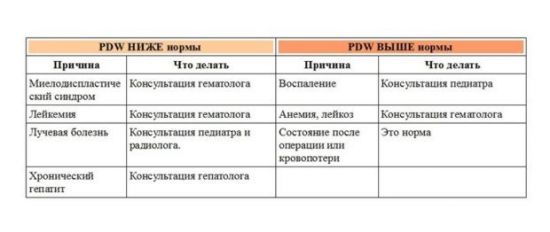
Reasons for deviations in the PDW indicator
At the same time, you should know that if PDW is elevated, then not in all absolutely cases this will mean the presence of any serious abnormalities in the body. The reasons for this can be the most trivial, for example, failure to comply with the basic rules of preparing for a blood test or directly collecting it from the laboratory medical staff.
Therefore, before undergoing the analysis, it is necessary to consult with a doctor about all possible subtleties in order to minimize the risks of receiving unreliable results and repeated analysis. Firstly, you need to know that blood is donated only on an empty stomach, that is, at least 10–12 hours must pass between the last meal and the collection of biomaterial.
Secondly, it is necessary to exclude excessive physical activity and, if possible, psycho-emotional activity the day before the study. Thirdly, you should refrain from taking any medications, even if they are multivitamin complexes, having previously discussed stopping them for several days. Strict adherence to all of the above measures will allow the doctor to see a complete picture of the patient’s blood condition.
Decoding the analysis results
Decoding PDW implies such designations as normal, increased level and reduced.
The norm is considered to be the case when old and young cells are in the bloodstream in almost identical numbers.
An increase in the indicator is an increase in the content of young and old platelets in the bloodstream, and indicates the presence of some kind of problem in the body. Sometimes an increase in PDW and the absence of any symptoms indicates the possible presence of genetic diseases. To check this, a full examination is carried out.

When PDW is reduced, this means that the vast majority of the bloodstream is made up of old cells. This means that there is a problem in the bone marrow and new blood cells are not being produced as before.
The test may also show that the person has very large platelets. Abnormally large cells indicate problems with the immune system. Sometimes cell size depends on heredity - some hereditary diseases affect the size of blood cells.
Studying the material can give the following result – “incomplete”. This means that the platelets clumped together during the counting process. To continue the study, the laboratory technician adds an anticoagulant to break down the cells.
When platelets diverge from their norm, and the reason for the deviation is unclear, an additional study is prescribed, where all materials will be examined in more detail for the presence of malignant processes, infections and other pathologies.
RDW CV and RDW SD in a blood test, interpretation and norm
I continue to introduce you to the decoding of abbreviations that can be seen in the analysis form that is issued by the hemolytic analyzer. This post will talk about such an indicator as RDW in a blood test, or the width of the distribution of red blood cells, which is determined by most modern devices. This is one of the erythrocyte indices, among which MCV, MCH, MCHC should also be mentioned .
The RDW index reflects the heterogeneity of red blood cells, is a measure of the dissimilarity of the red blood cell population by volume, and indicates variations in red blood cell volume. The coefficient is used as an auxiliary criterion for diagnosing anemia.
RDW SD and RDW CV: decoding, norm, differences
With the decoding of RDW in the blood test, the situation has become a little clearer, but this is only the tip of the iceberg. There are two RDW measures. These are RDW-CV and RDW-SD - they both determine the variability of red blood cells in size.
The first index is deciphered as the relative width of the distribution of red blood cells by volume (coefficient of variation). RDW-CV in a blood test is influenced by MCV, with fluctuations in which there will be a tendency to increase the described indicator. To make it clearer, look at the calculation formula:
RDW-CV=SD/MCV×100
Here SD acts as the standard mean square deviation of the erythrocyte volume from the average number. The RDW-CV index indicates how much red cell volume differs from the average. It is measured as a percentage; normally it is 11.5% -14.5%, which indicates the existence of a homogeneous population of cells (normo-, micro- or macrocytes).
The erythrocyte coefficient RDW-SD in a blood test is deciphered as the relative width of the distribution of erythrocytes by volume (standard deviation). It shows how different these cells are in size and volume, that is, what the difference is between a tiny red blood cell and a very large one. This calculated indicator is not subject to MCV; it is measured in femtoliters (fl). Its norm is 42±5 fl.
If we consider the differences in these two versions of RDW, then it should be said that RDW-SD is considered a more accurate index in the presence of a small population of macrocytes (red blood cells with a diameter greater than 7.9 microns) or microcytes (diameter
RDW in blood test is increased
An increase in RDW by more than 15% indicates the presence of cells of heterogeneous volume (micro-, normo-, macro- and schizocytes). The higher the score, the greater the discrepancy in the size of red cells. This phenomenon is called anisocytosis. The width of the distribution of red blood cells above normal can be the result of many reasons, which include:
- microcytic anemia,
- blood transfusions,
- Iron-deficiency anemia,
- oncopathologies with metastases to the bone marrow,
- folic acid deficiency,
- alcoholism,
- myelodysplastic syndrome.
An increased width of distribution of erythrocytes is also observed in chronic liver damage (against the background of normal MCV), lead poisoning, Alzheimer's disease, microspherocytosis, hemoglobinopathies, bone marrow metaplasia, as well as in cardiovascular diseases.
RDW in blood test is reduced
If in the analysis the width of the distribution of red blood cells is below normal, then this fact indicates the need to retake the tests. Because the analyzer shows either an overestimated value or a normal value. In principle, the width of the distribution of red blood cells cannot be reduced, and such a result is not diagnostically valuable.
I hope my article helped you understand a little about this rather complicated topic, and now you know something about deciphering RDW in a blood test. Along the way, you can update the information about red blood cells in your memory. If you are interested in their norm, then come here. It would also be a good idea to read about low or high red blood cells.
For which PDW should you see a doctor?
If the results of a laboratory test show a high or low PDW value, this is a reason to consult a physician. The doctor will examine the available results, and may ask related questions, after which a referral will be issued for other tests.

Do not forget that the reason for the increase may be non-compliance with the rules of preparation for procedures and taking medications. If this is the case for changes in indicators, then the person is sent for a repeat blood draw.
How to get PDW back to normal
PDW in a blood test is a value at which it is impossible to accurately determine the diagnosis. Before you begin to bring platelets back to normal, you need to understand why they deviated from their normal state. Therefore, first you should know your diagnosis accurately. Only then does the doctor prescribe the appropriate treatment - a course of medications, hardware therapy, etc.
Special attention is paid to oncological diseases. If the patient has been diagnosed with this, treatment involves special treatment (chemotherapy, radiation therapy, bone marrow cell transplant).
Before using any medication, a person should consult a hematologist. If a child has problems, the pediatrician will prescribe all the necessary medications for treatment.
Medications
If PDW in the blood is low, the doctor may prescribe the following medications:
- Aspirin;
- Clopidogrel;
- Thrombo ACC.
These medications can thin the blood, both for a short time and for a longer period.
When it is necessary, on the contrary, to reduce the indicator, the following drugs may be prescribed:

- Vikasol;
- Dicynone;
- Sedokor.
If a person has undergone a procedure such as chemotherapy, normal PDW is restored by taking hormonal medications.
You should not resort to medications without consulting your doctor - the effects of medications may be unexpected and cause even more problems.
Traditional methods
Traditional medicine will not replace full-fledged treatment, but it can be an additional way to get your health in order.
Home remedies are good during a person’s recovery period after surgery.
One of the most popular recipes for restoring PDW levels is a ginger-honey mixture, the recipe for which is very simple:
- Ginger root is ground into a paste and mixed with honey in equal parts.
- The resulting mixture is placed in the refrigerator for 3 days.
- Throughout the entire course (10 days), this folk remedy must be kept in the cold. You should also not heat honey - because of this, all its nutritional properties are lost.
- The product is taken as follows: 1 tbsp. eaten on an empty stomach. It is important to monitor the body’s reaction, since both of these products are strong allergens. To begin with, you should take 1 tsp.
Even before taking folk remedies, you should consult a doctor, as the condition may worsen, allergies and other side effects may occur. If the condition worsens, you should immediately stop taking home remedies.
Other methods
There are quite a few other methods of treating ailments. First, you should note the diet that your doctor may prescribe for a speedy recovery. Depending on which PDW (low or high), products are selected.
So, with a high value, you should pay attention to:
- berries: currants, cranberries, rose hips;
- bitter chocolate;

- lemon, ginger, garlic;
- flaxseed oil and seed.
If the indicators are low, the following products may be added to the patient’s diet:
- eggs;
- red lean meat;
- sesame;
- cereals (buckwheat, rice);
- beet.
Vitamins B12 and C must be present in the patient’s diet - they help restore blood composition. Vitamins can be taken in the form of vitamin complexes, adding them to the diet. Typically, a course of vitamins is 30 days.
Clinics also use hardware therapy in the form of blood purification with a separator apparatus. This device traps blood cells, thereby reducing PDW. Doctors additionally give recommendations so that after recovery you can maintain normal blood counts.
They are quite simple:
- Be sure to consume a sufficient amount of clean water (up to 2 liters);
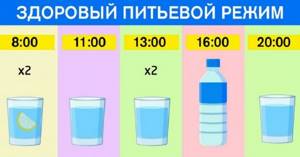
- avoid physical overexertion; walking and exercise therapy will be sufficient for the patient;
- following a diet that saturates the body with all the necessary elements and improves the condition of the blood;
- reduce the consumption of medications, especially if they were taken thoughtlessly.
These recommendations will help a person maintain normal levels and prevent the recurrence of pathologies.
The essence of the analysis and what it shows
To understand what we are talking about, you need to turn to human anatomy and physiology.
Platelets are special shaped blood cells. They ensure its normal coagulation.
The development of cytological structures occurs in special tissues of the bone marrow. This process is called hematopoiesis, and if we talk about platelets in isolation, then thrombocytopoiesis.
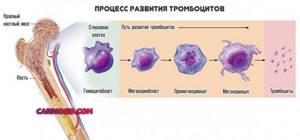
Platelets perform their functions for quite a long time. Within 5-12 days. Then they die, and new ones come to replace them.
But this is not a quick phenomenon. Over the course of a short period of time, a shaped cell goes through all stages of life from youth to old age.
After maturation and immediately after leaving the bone marrow, the structure is large. The blood plate is capable of performing its tasks as efficiently as possible.
It takes less time and not as many platelets to close the wound surface. Moreover, adhesion and aggregation occur faster. That is, attachment to the wall of the vessel and accumulation, layering.

Old cells are no longer as active. More of them are needed, and the natural processes themselves proceed slowly and not as well as before. Hence the problems.
Accordingly, if there are more obsolete cytological units, then coagulability will suffer. Its intensity will not be so great that it will be reflected in the coagulogram.
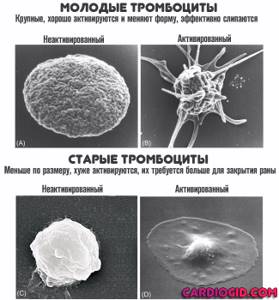
The platelet distribution index or PDW precisely indicates the heterogeneity of cells: that is, the percentage of red plates distributed.
Normally they should be in dynamic equilibrium. Numbers from 1 to 20% are used as values. When young forms of cytological structures predominate, the formula shifts to the right. That is, in a big way. In the opposite case, when there are a lot of old cells, the opposite is true. The number will be lower.
The conditional generalized norm is approximately 15-17%. That is, young forms of platelets should predominate in the bloodstream. This is an indispensable condition for normal coagulation and functioning of the body. Of course, there are differences depending on the gender and age of the patients.
The analysis shows several main violations:
- Thrombocytopathies. A classic pathological process in which the functional activity of red blood platelets decreases. Formally, their number remains normal. This is where the index in question comes to the rescue.
Because the reason is often on the surface and lies in a change in the platelet ratio. The more old cells there are, the worse the body’s functioning is. In critical cases, obsolete structures remain.
- Thrombocytopenia. Different condition. With it, not only the PDW index changes, but also other indicators. The hallmark of the pathological process is a decrease in the number of platelets. It all depends on the primary diagnosis.

- Bone marrow disorders. It’s quite difficult to say exactly which ones. As a rule, with disorders of this kind, the previous named pathologies develop. At the same time, immature hematopoietic cells appear in the bloodstream. Megakaryocytes. They are unable to perform any functions. In this case, it makes sense to conduct a diagnosis. A bone marrow puncture is prescribed.
A blood test for PDW is far from the only necessary test. To tell exactly what is wrong with the patient, auxiliary measures are needed.
Possible complications
Ignoring the results of laboratory research can lead to undesirable consequences. If the reason was non-compliance with the rules before taking the exam or the presence of menstruation or pregnancy, then there is no need to worry.
However, deviations from the PDW norm may hide serious diseases that should not be neglected. Without proper examination and treatment, the disease will progress and ultimately lead to death or disability.
Indiscriminate use of medications without a doctor’s prescription can also cause complications and aggravate the situation. If anything in the tests turns out to be abnormal, you should immediately contact your doctor.
The platelet index PDW (platelet distribution width by volume) is an important indicator in a blood test, and a discrepancy with the normal value may indicate the presence of pathogenic processes in the body. A test such as donating blood gives a clear picture of platelet volume and also makes it clear whether further examination and treatment is necessary.
Article design: Mila Friedan
Increase pdw
When the pdw value of a blood test when deciphered is higher than normal, this is a sign of strong platelet heterogeneity in volume. This state of the circulatory system entails serious consequences. As a result of gradual clogging of blood vessels and capillaries, blood circulation becomes difficult. Which leads to numerous consequences, ranging from a slowdown in metabolism to a list of heart attacks.
Increased platelet volume occurs in the following pathologies:
- Bleeding as a result of surgery or injury results in a high level of platelet concentration in the bloodstream.
- Pdw is increased in blood tests with anemia, which provokes oxygen starvation, due to which flat blood cells may be subject to deformation.
- Oncological pathologies in which systematic damage to blood cells and platelets occurs, including. As a result, their volumes change and lead to disruption of the distribution of platelets in the blood mass.
- Inflammatory processes, during the development of which the number of platelets is increased, and hence the width of their distribution by volume. If, in addition, there is an increased level of leukocytes, then all the signs of inflammation are present.
If pdw is elevated, then this is not necessarily evidence of any serious abnormalities in the body. The reason may be non-compliance with simple measures recommended before taking an analysis to determine the extent of platelet distribution in the blood flow. Blood must be donated in the morning and always on an empty stomach; at least 10–12 hours must pass after the current meal. You should refrain from strong physical and emotional stress on the eve of the examination. It is not advisable to take any medications, even multivitamins.


